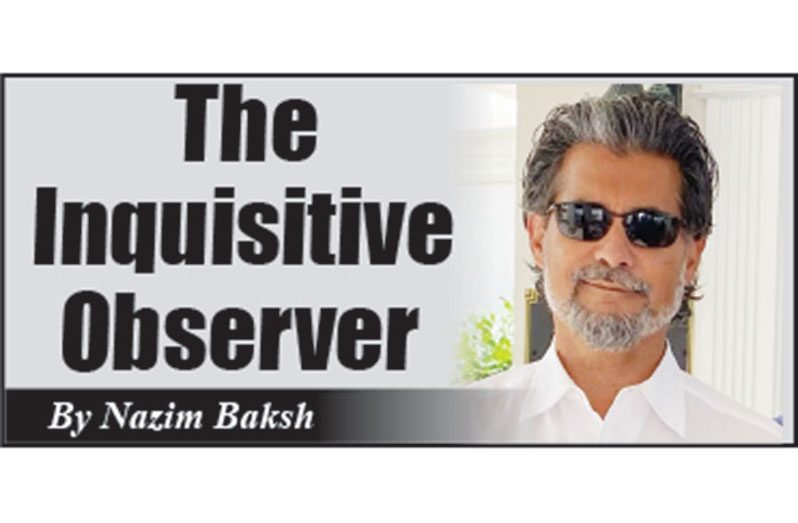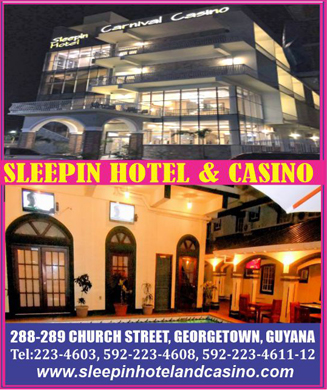TWO years ago, I attended a wedding on the West Coast of Demerara. The bride arrived promptly, taking her seat by 14:00 hours, but the groom was nowhere in sight. As the Imam and nearly 200 guests grew increasingly restless under the sweltering afternoon sun, news spread: the groom and his entourage were stuck in a traffic jam, stranded atop the Demerara Harbour Bridge. It’s a scene all too familiar to many of us, but tonight, that story changes.
With the commissioning of the new Demerara River Crossing, this generation, and generations yet to come, are being handed a gift of reclaimed time from generations past, and with it, the chance to savour life’s precious moments in the company of those we cherish most.
By Guyana’s standard, the new Demerara bridge, whatever formal name is eventually attached to it, is awe-inspiring. Hundreds of Guyanese engineering students will study it, write Master’s and doctoral theses on it, seek ways to build better and stronger bridges, and if President Irfaan Ali’s vision becomes a reality, our infrastructural development will be the envy of the world.
Bridges, whether over water or land, are more than just transportation pathways made of steel and concrete. They symbolise connection, not only between geographic points but also between social groups. They present opportunities that often redefine local identities and redraw the map of entire communities.
I recall that, as a teenager, my friends and I walked across the Harbour Bridge from east to west to participate in a youth camp at the La Grange masjid. The fact that we could have done that in 1978 was a game-changer. Before that, we would have had to take the long, time-consuming and expensive way with a ferry across the river from Stabroek to Vreed-en-Hoop and a taxi to our destination.
Bridges reshape the way we imagine ourselves and communities. They eliminate isolation and allow people to move from the periphery to the centre, from vulnerabilities to strength, raising the curtain to a world of possibilities, purpose and meaning for thousands of people. And of course, bridges not only trigger social integration, but they also alter living standards and are the generators of wealth and economic prosperity.
Academic and empirical studies have shown that bridges, the new Demerara River Crossing being a perfect example, often result in greater cultural awareness, the engine that drives national cohesion. Strangely, bridges, studies have shown, help improve youth literacy in core communities that utilise them.
While bridges are metaphors for transition, they are also symbols of deeply spiritual journeys and are often social hubs for gatherings, celebrations and artistic expressions. In Eastern and Western faith traditions, bridges serve as a metaphor for salvation, reconciliation and overcoming the hardships of life.
Friedeich Nietzcehe said that “What is great in man is that he is a bridge, not a goal.” It is a profound metaphor that centres us as a “bridge” between past and present, between our animalistic urges and an idealistic future of an ethically advanced human state. Nietzcehe described that state as the Übermensch.
As we look to our bridge, a gift to the nation from a president and an administration devoted to inspiring Guyanese to reach new heights, we can take inspiration from the great civilisations that flourished around their bridges.
The bridges of Isfahan in Iran, for example, are more than just remarkable feats of architectural brilliance. The Si-o-Se-Pol and the Khaju bridges, built four hundred years ago across the Zayandeh Rud River, reflect a vibrant civilisation, built in many ways, like Georgetown, around water. Walking across these bridges, you can hear the echoes of poetry recitations, musical performances, and public discourses that have taken place at these bridges.
As a young journalist, one of the first stories that consumed me was the war in the former Yugoslavia. I still recall the collective gasp from the international community in early November 1993 when the Old Bridge (Stari Most) in Mostar, Bosnia Herzegovina, crumbled into the Neretva River after months of relentless shelling by Serbian forces.
Built in 1566 by a student of the great architect Sinan at the order of Sultan Suleiman the Magnificent, the Old Bridge was the jewel of Ottoman architecture. It was not just a passage over a river, it was a link between Bosnians, Croats, Serbs, Muslims, Jews and Orthodox Christians. Its destruction shattered the image of friendship, reconciliation and human solidarity.
From the time it was destroyed, UNESCO stepped in to designate the Stari Most as a heritage structure. When consulted, the people of Bosnia said they didn’t just want any ordinary crossing to be rebuilt. Rather, they wanted a replica, as a fitting symbol to reassert their desecrated values, their shared heritage and a basis for social cohesion, inclusion and citizenship.
Just as the world’s greatest bridges are stages for art and the renewal of spirit, so too, I believe, shall the new Demerara River Crossing invite Guyanese to seize our moments, honour our traditions, and cultivate new dreams.
Our president will certainly deliver a message to our nation today that this crossing is a reminder that our individual and collective journeys, whether to weddings, youth camps, or places of worship, are richer for the bonds we forge along the way. That if we tend faithfully to our connections, if we build with vision, empathy, and resolve, then our bridge will endure not only its 133 stay cables but in every story told, every life changed, and every community brought closer together by its span.
DISCLAIMER: The views and opinions expressed in this column are solely those of the author and do not necessarily reflect the official policy or position of the Guyana National Newspapers Limited.



.jpg)








